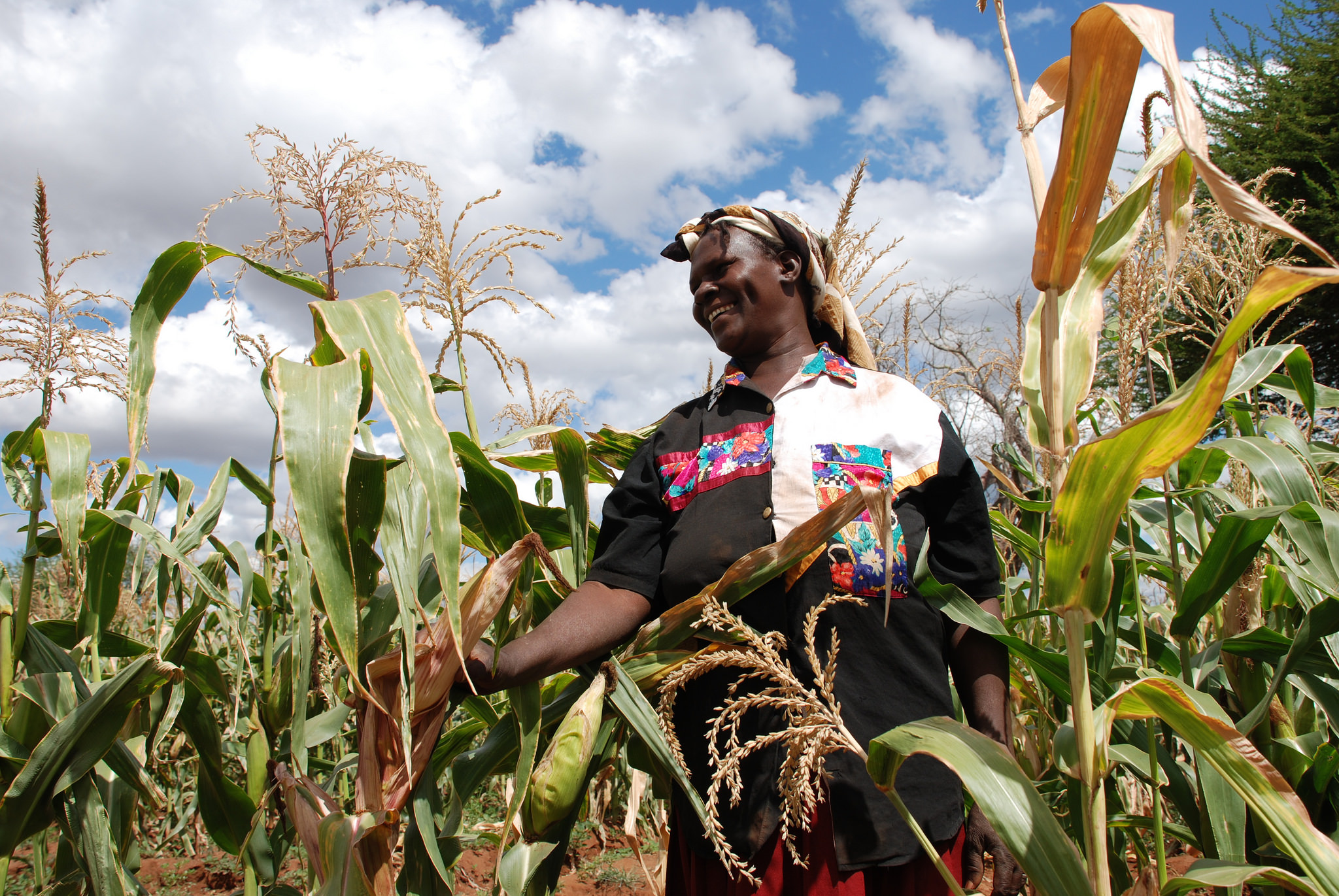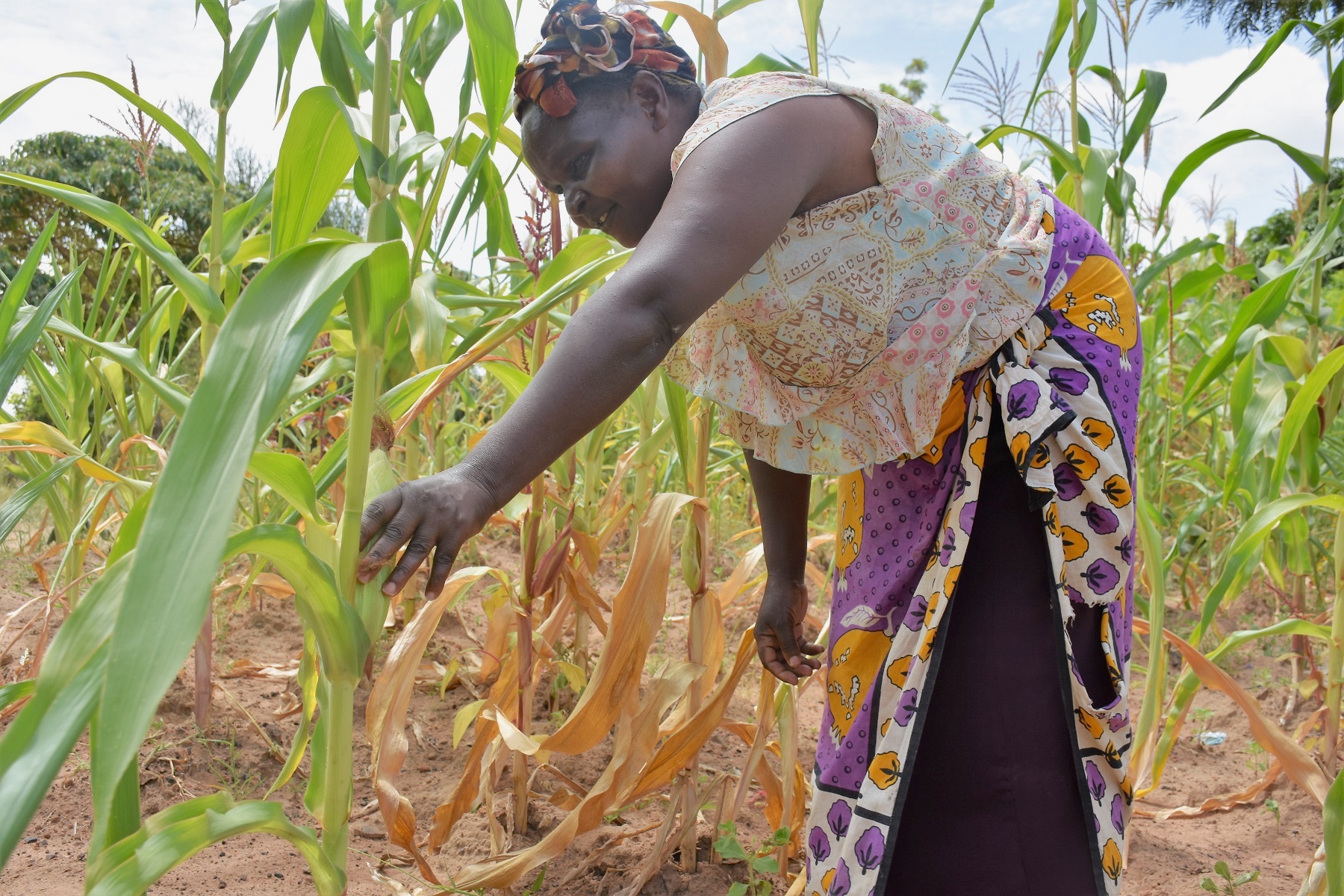As climate experts forecast another climate-warming El Nino in early 2019, maize varieties developed under the Drought Tolerant Maize for Africa (DTMA) initiative represent low-cost innovations that could improve the crop’s climate resilience and the livelihoods of millions family farmers across Africa, according to the UN Food and Agriculture Organization (FAO).
Drought tolerant (DT) maize was among 20 success stories featured at the Innovation Fair of the International Symposium on Agricultural Innovation for Family Farmers, organized and hosted by FAO in Rome from 21 to 23 November, 2018. Drawing more than 500 participants from farmer associations, international organizations, United Nations agencies, governments, research institutions and the private sector, the Fair aimed to devise and recommend actions that unlock the potential of agricultural innovation.
Drought-tolerant seeds: An affordable and effective way to cope with dry weather
‘’Since early 1990s, farmers in Zimbabwe face erratic rains and maize crops often fail due to frequent droughts,’’ said Cosmos Magorokosho, maize breeder based at the Harare, Zimbabwe, office of the International Maize and Wheat Improvement Center (CIMMYT).
Led by CIMMYT, funded by the Bill & Melinda Gates Foundation and the Howard Buffett Foundation, and involving 13 national maize breeding programs and various seed companies across Africa, DTMA is responsible for more than 160 new maize varieties, including 15 in Zimbabwe that yield 25 to 30 percent more than conventional varieties under dry conditions and perform as well as those varieties under normal rainfall. The latter was crucial for convincing seed companies to take up and market DT maize, according to Magorokosho.
In one study in drought-prone southern Zimbabwe, farmers using the DT varieties in dry years were able to harvest up to 600 kilograms more maize per hectare — worth $240 and enough maize for 9 months for an average family of 6 people — than farmers who sowed conventional varieties. The added food security comes at no additional cost and, if farmers choose to sell the grain, it brings extra income for other household needs.
Under the Stress Tolerant Maize for Africa initiative, CIMMYT and partners are continuing to develop maize varieties that cope not only with drought but with common constraints such as insect pests, diseases including Maize Lethal Necrosis and infertile soils.
Public-private partnerships enable demand-driven innovation
Adopting new technology or practices can represent unacceptable risks for resource-poor farming families, who live without the official safety nets enjoyed by peers in prosperous economies and will simply starve if their crops fail. Involving farmers, seed companies and other end users in development is essential for agricultural innovations to be widely adopted and sustainable, according to Bram Govaerts, global director of innovative business strategies at CIMMYT.
“Dialogue with global food processing companies can create market opportunities for smallholder farmers through approaches like local, responsible sourcing,’’ said Govaerts, speaking during the fair’s panel ‘Engaging the private sector to accelerate agricultural innovation.’
“More than 3,300 Mexican farmers on more than 35,000 hectares in 5 states will benefit from responsible sourcing arrangements, whereby the companies pay them to grow the grain using sustainable farming practices,” Govaerts explained, adding that the farmers will supply an estimated 400,000 tons of grain to participating companies in the next 3 to 5 years.
Mexico’s Agriculture Department (SAGARPA) supports these and other public-private partnerships through its investments in MasAgro, which studies, develops and transfers innovative farming practices and technologies to the field, with emphasis on family farmers.
In September, the FAO’s Regional Office for Latin America and the Caribbean acknowledged MasAgro as a replicable and scalable initiative that could contribute significantly to sustainable rural development in that region.
These two impactful examples show that agricultural innovation can only succeed through well-thought research and development partnerships, and building such collaborations is a science in itself.


 Capacity development
Capacity development